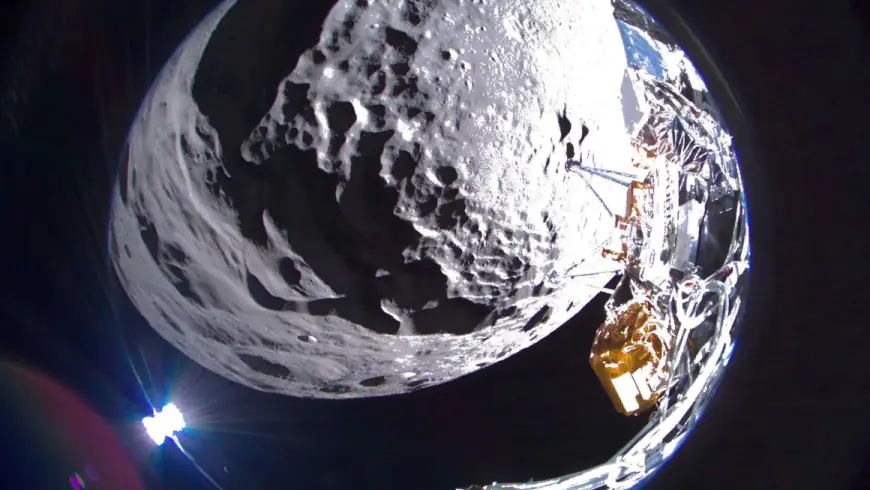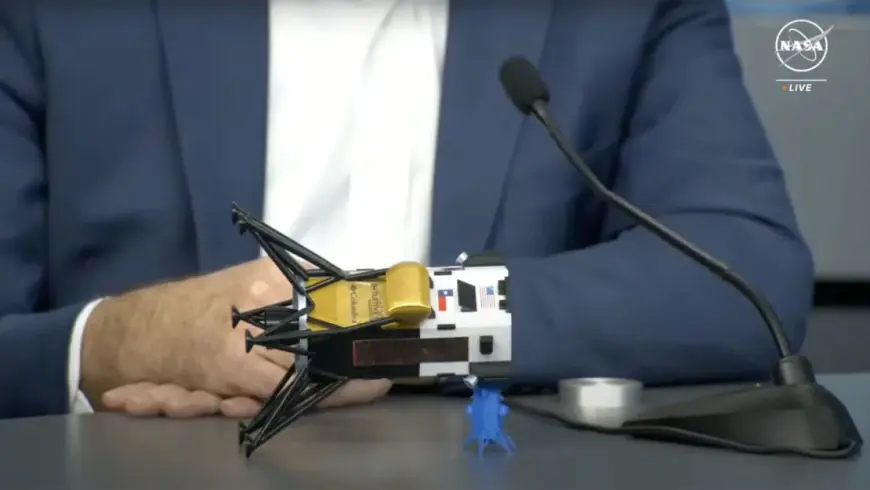The Unexpected Landing of the Odysseus Lunar Lander
The Odysseus lunar lander, built by Intuitive Machines, landed sideways on the moon. Despite the unexpected situation, the team worked diligently to assess the situation and find solutions. This article explores the challenges and potential impact of the landing, while also highlighting the significance of the mission and lessons learned for future lunar exploration.

The recent lunar mission of the Odysseus lander, built by Intuitive Machines, captured the world's attention. What started with a seemingly successful touchdown on the lunar surface took an unexpected turn, with the company later revealing that Odysseus had landed on its side. This unexpected development sparked a surge of curiosity and concern, raising questions about the lander's fate and the future of this private lunar venture.
A Rocky Reception:
Initially, Intuitive Machines reported a successful, upright landing of Odysseus, nicknamed "Odie" or IM-1. However, further analysis of data revealed a different story. It appeared that during the descent, one of the lander's feet snagged on uneven lunar terrain, causing it to tip over and come to rest sideways, propped up precariously by a rock.
This unexpected landing scenario presented a unique challenge for the company. While the lunar environment is harsh and unforgiving, the sideways position added an extra layer of complexity. Concerns arose regarding the lander's stability, functionality, and the potential impact on its scientific and commercial objectives.
Assessing the Situation:
Intuitive Machines quickly went into crisis response mode, gathering data and forming a team to assess the situation. Their engineers and scientists worked tirelessly to understand the full extent of the issue and determine the potential risks and opportunities.
The team analyzed the lander's telemetry data, meticulously examining its various systems for any signs of damage or malfunction. Fortunately, initial assessments indicated that the lander's core functions remained operational. This was a major relief, as it meant the mission wasn't entirely compromised.
Moving Forward with a Tilt:
However, the sideways position presented several challenges. The lander's solar panels, crucial for generating power, were not optimally positioned to receive sunlight. Additionally, the scientific instruments onboard, intended to conduct experiments and collect lunar data, might face limitations due to their altered orientation.
Despite these hurdles, Intuitive Machines remained determined to salvage the mission. They devised a plan to adjust the lander's position, if possible, to optimize solar power generation and instrument functionality. This involved utilizing the lander's thrusters in a series of delicate maneuvers, taking extreme care to avoid further complications.

A Lesson Learned:
The unexpected landing of Odysseus serves as a valuable learning experience for future lunar missions. It highlights the unpredictable nature of the lunar terrain and the importance of anticipating the unexpected. This incident also underscores the crucial role of robust engineering design and contingency planning in ensuring the resilience of spacecraft in challenging environments.
The Future of Lunar Exploration:
The story of Odysseus is a testament to the human spirit of perseverance and resourcefulness. While the mission encountered a setback, the team's dedication and quick response prevented a complete failure. This incident, though challenging, holds significant lessons for the future of lunar exploration, paving the way for a future where we can better prepare for and mitigate the risks inherent in space exploration.
Beyond the Complications:
Despite the challenges, the mission of Odysseus carries significance beyond the unexpected landing. This private venture marks a significant step forward in the commercialization of space exploration. It demonstrates the growing capabilities of private companies to undertake complex space missions, potentially paving the way for more cost-effective and efficient exploration endeavors.
Furthermore, the mission contributes to the advancement of scientific research. The data collected by Odysseus, even with operational limitations, can still offer valuable insights into the lunar environment and contribute to our understanding of this celestial body.
The story of Odysseus is a reminder that the journey of space exploration is rarely a straight line. Challenges are inevitable, and unexpected twists and turns can occur. However, by embracing learning opportunities, adapting to changing situations, and fostering a spirit of collaboration, humanity can continue to push the boundaries of space exploration and unlock the secrets of our universe.






